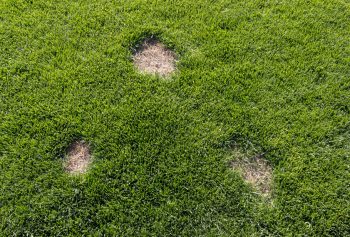
Crape myrtle, a magnificent shrub that originated in China and is also known as loosestrife, is a genus of over 50 tree and shrub cultivars. This blog post, Caring for Crape Myrtles: A How-to Guide, will provide important information for aspiring arborists.
These plants are extremely diverse. A few being deciduous and some evergreen; their sizes start from barely a foot tall, diminutive variants to towering titans that may reach heights of more than 100 feet!
The tree’s native range extends from India to Indonesia, Australia, and other parts of Asia. While many of the individual characteristics of their crinkled, rippled, and frilly blossoms and peeling bark make each crape myrtle distinct in landscaping.
They share another distinct characteristic: their beautiful fern-like frilly, crinkled, or rippled blooms, as well as their peeled bark that adds texture to their trunks and stems.
Crape Myrtle Planting Instructions
The optimal period to plant is late fall to early spring. However, many people purchase and plant crape myrtles in the summer to take advantage of the blooming season.
This also works, but adequate watering during the summer months is critical for successfully moving it into your garden. No matter when you plant it, thoroughly water your crape myrtle before planting.
This will assist it in absorbing water following planting. Mulching helps retain moisture and keeps weeds at bay. As advised on the label, use the recommended fertilizer for the best results.
Crape Myrtle Care and Maintenance
Crape myrtles require little maintenance. Feed in the spring with a high-quality fertilizer formulated specifically for flowering trees and shrubs. Crape myrtles are known for being drought tolerant. Read about other drought tolerant plants for Texas landscapes.
Remember to water the younger plants whenever there’s an extended drought period.
Pruning
Crape myrtles require little pruning to establish a sturdy structure. However, there are certain simple pruning strategies that can boost the attractiveness and bloom potential of the tree.
First of all, you should remove any dead branches, lower branches that are near the ground, twiggy branches that are sprouting from the trunk, and root suckers from the base.
Second, choose one to five robust shoots near the ground to be the tree’s primary stems and eliminate the rest. The surviving shoots will now support the central framework of the tree.
Fertilizer
Crape myrtles thrive in soils with a pH range of 4.5 to 7.5. However, even in less-than-ideal soil conditions, crape myrtles require very little fertilizer due to their hardiness.
For elderly, sickly, or poor soil plants, a light spring fertilizer treatment (low nitrogen, no phosphorus) should suffice.
Sunlight
Crape myrtles flourish in direct sunlight and high temperatures. If your crape myrtle is under shade, consider removing neighboring trees to increase sunlight.
If you’re about to plant your crape myrtle, find a location that receives enough sun.
The Element of Water
Crape myrtles, particularly well-established specimens, are drought tolerant. They require little water and thrive in well-drained soil. This is why you should avoid overwatering your Crape myrtles.
Flowers
Too much watering, excessive fertilizer, insufficient sun, and insufficient heat can all contribute to a lack of flowering. These conditions increase vegetative growth, resulting in fewer blooms.
Disease and Pest Control
Proper disease and pest control fungus from forming. Crape myrtles are sensitive to powdery mildew, sooty mold, and other fungal infections.
You can take care of fungal and other infections with a broad-spectrum fungicide to prevent further infection.






One Response
I love crepe myrtles, so saving this for the new trees I’m planting